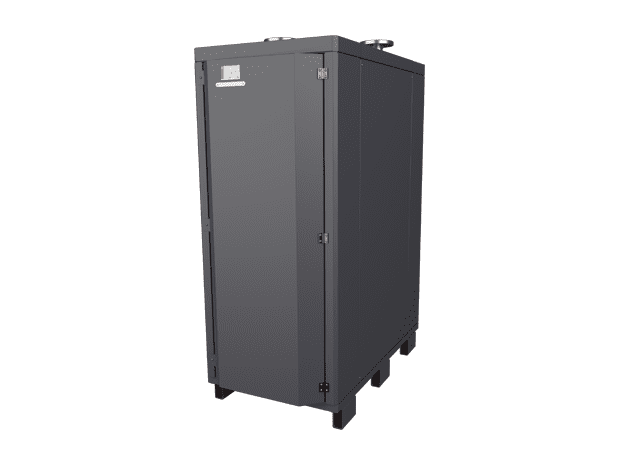Honeymead Cottage, Somerset
Ground Source Review: Honeymead Cottage, Somerset.
Daniel Lane upgraded the outdated and inefficient radiator system in his stone bungalow and installed a 20kW Single Phase Twin Compact to provide heating and hot water.
Ground Source Review: Honeymead Cottage
Daniel Lane knew that he had an awkward house to heat; up until the end of 2014 half of his picturesque stone bungalow, which used to be an old cowshed, was poorly heated by old steel radiators that were nearly 16 years old. The other half had been fitted with under floor heating when the property was renovated in 2002. Daniel knew that he needed to upgrade the underperforming side of the heating distribution system and as the underfloor heating was a perfect heat emitter for ground source heat pumps, he decided that this was the right time to install one.
He opted for renewable heating technology due to the volatile and uncertain price of oil which has historically been very expensive. He knew that oil can be difficult to get hold of when there is a shortage and didn’t want to be held to ransom. Daniel did a years’ worth of research into renewables and decided on a ground source heat pump because of the high system efficiencies it could offer and the generous payback available from the Renewable Heat Incentive (RHI: this scheme has now closed – please visit this page to explore other funding).
He said: “I chose Kensa as I’d heard good things about them and I appreciated the fact that all their heat pumps are manufactured in the UK. When I visited the team in their Exeter office I discovered they had a good range of products which offered the best fit for my home in terms of size and power. I also knew that Kensa offered reliable customer support after the installation was complete. Being able to call on them should I require help in the future was an important factor when deciding which manufacturer to use.”


Kensa provided Daniel with a 20kW single phase twin compact heat pump to provide space heating and hot water for his property. The ground source heat pump extracts renewable heat energy from the ground using 1200m of pipe buried in four 300m trenches in an adjoining field. Having the extra land meant that Daniel opted for straight pipe instead of the more compact slinkies. He used an experienced contractor and the installation all went smoothly.
After more research, Daniel sourced aluminium radiators which use 70% less water than his old steel versions. By sizing these carefully he achieved low flow temperature of 40°C allowing the ground source heat pump to operate at a high efficiency. Alongside the property’s new double glazing, 11 aluminium radiators, loft insulation and current under floor heating, these measures earned the property a 5* efficiency rating. The replacement heating system was installed last autumn and the ground source heat pump turned on in November 2014.
Daniel said:
I noticed a difference straight away. Because the bungalow is made from solid stone it is slow to warm up, but it also retains the heat for longer periods of time once at the desired temperature. We were used to inefficient radiators, so the very first day the ground source heat pump came on it was so effective that we had to turn it down!
I worked really hard with Kensa and the radiator company to get the sizing right. I’m confident we’ve made the system as efficient as possible. My heating bills dropped so much this spring that I actually called Kensa to check that the system was working properly because I couldn’t believe how cost effective it was!
Daniel applied for the Government’s Renewable Heat Incentive (RHI: this scheme has now closed) and due to the efficiencies of the heat distribution system and good levels of insulation he was able to claim the full amount. He is keen to continue making his home as self-sufficient and economical as possible, with plans to install solar pv to generate electricity and make use of a nearby spring as a water source.



Ground Source Review Honeymead Cottage - Ground recovery after trenches and straight pipe installation






